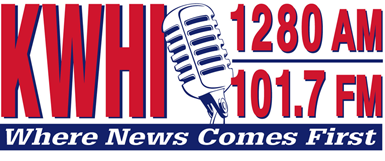BRENHAM CITY OFFICIALS HONE IN ON COMPREHENSIVE PLAN GOALS
Officials from Brenham met with planning consultants today (Thursday) to further detail what they want for the city moving forward.
Members of the Brenham City Council, Planning and Zoning Commission and Board of Adjustment discussed an update to the city’s comprehensive plan with Kendig Keast Collaborative (KKC), based out of Sugarland.

Gary Mitchell and Meredith Dang, President and Senior Associate of KKC, dug into several potential strategies for the city, as well as numerous statistics gathered from census and economic data. The two also outlined the city’s guiding principles with each of its major planning topics, and its top strategic priorities.
Some of the city’s previously outlined planning topics are land use and development, transportation, economic development, recreation and amenities, and growth capacity.
Dang said, as the city moves forward, it needs to emphasize quality as it grows, be adaptable by keeping a diverse economy and housing market, be authentic by focusing on elements that make Brenham unique, be active by encouraging healthy living through parks and other recreation, and be collaborative by pursuing and maintaining partnerships in all arenas.
Dang also presented top strategic priorities for the city to pursue. These include focusing on economic essentials and a strong tax base, different growth strategies, new and improved tools to advance plan priorities, keeping attention on Brenham’s infrastructure, as well as housing costs and options inside the city, and ultimately creating “an even more livable Brenham”.
Dang referenced data showing that, as of 2018, 46.8 percent of Washington County’s population resides in Brenham, and Brenham is growing at a slightly faster rate than the rest of the county. In addition, 31.7 percent of all housing units in Brenham are renter owned, compared to 19.4 percent in the county.
Since 2000, median home values within Brenham city limits have shot up 112 percent, at over $163,000 in 2018. This compares to a median home value of $77,000 in 2000. As of this month, the median value of homes currently listed for sale in Brenham sits at $288,000. Mitchell noted that there are more multi-family residences in Brenham than seen in other cities of its size.

(courtesy Brenham Economic Development Foundation)
In 2017, Brenham’s retail trade area experienced $534 million in leakage in retail spending. This is according to data from the 2017 Retail Trade Area Gap/Opportunity Analysis, performed by Brenham’s Economic Development Foundation.
The analysis found that, out of the whole trade area, potential sales totaled $1.09 billion, but actual sales reached just $484 million. Brenham’s retail trade area goes as far west as Ledbetter, south to New Ulm, just north of Lyons, and as far east as Courtney.
City Manager James Fisher said to keep in mind that, as Brenham pursues new retail development, it sits at the edge of several other markets. He maintained, while retailers may get nervous around building so close to the Bryan/College Station, Cypress, Katy and Bastrop markets, they know Brenham is growing and is a regional center.
Dang also showed potential population numbers going as far as 2040. She reiterated that, like a weather forecast, these are merely predictions and not set in stone. By the year 2040, assuming the city maintains its compound annual growth rate (CAGR) of 1 percent, its population within city limits will fall in the range of 19,011 and 20,950, with a midpoint of 19,980. This would add an additional 3,012 people, or 17.7 percent of the city’s current population of 16,968.
However, the city could see a higher jump if its annual growth rate increases. At a 1.25 percent CAGR, the city’s population could be 22,300 by 2040. With a 1.5 percent rate, it could reach 23,544, and at 2 percent, Brenham could have as many as 26,233 residents.

Of all the land within city limits, 34.4 percent is undeveloped, which includes 25.3 percent agricultural land. Currently developed land consists of 21.4 percent residential, 10.1 percent public or institutional, 7.6 percent commercial, 5.8 percent industrial, and 4.2 percent parks or open space. Mitchell added that these numbers are comparable to cities of this size, but was unsure how much of the undeveloped land will really “come into play”.
Dang stated Brenham was “truly unique” in that it is one of ten Texas cities that owns and operates all utilities in the community. She said it is “both a challenge and an opportunity” for the city, as it takes in additional revenue, but constantly needs to maintain infrastructure.
The city maintains 81 miles of roadway, but Dang said all traffic signals are owned and maintained by TxDOT. Dang also spoke on the “relatively high” number of car crashes per day, averaging about 1.5 crashes each day from 2016-18. Hot spots for crashes include the intersection of US 290 and Highway 36, the cloverleaf interchange, and the downtown area.
The city also has a large amount of park space, compared to Texas and the United States. Including the planned Brenham Family Park on over 100 acres of land, the city has 298 acres of park space. This averages to 17.6 acres per 1,000 people, above the median for the state (9 acres) and the nation (11.9 acres).
Dang also presented data showing Blinn’s economic impact to Brenham. She referenced the 2013 Economic Development Impact Study, which documents an $87 million economic impact annually.
Dang added that, during her talks with Blinn officials, they are wanting to see an increase in enrollment on the Brenham campus. Mitchell added they want to see growth like what’s been seen in Bryan. Dang said the firm is planning a meeting with Blinn next month.


